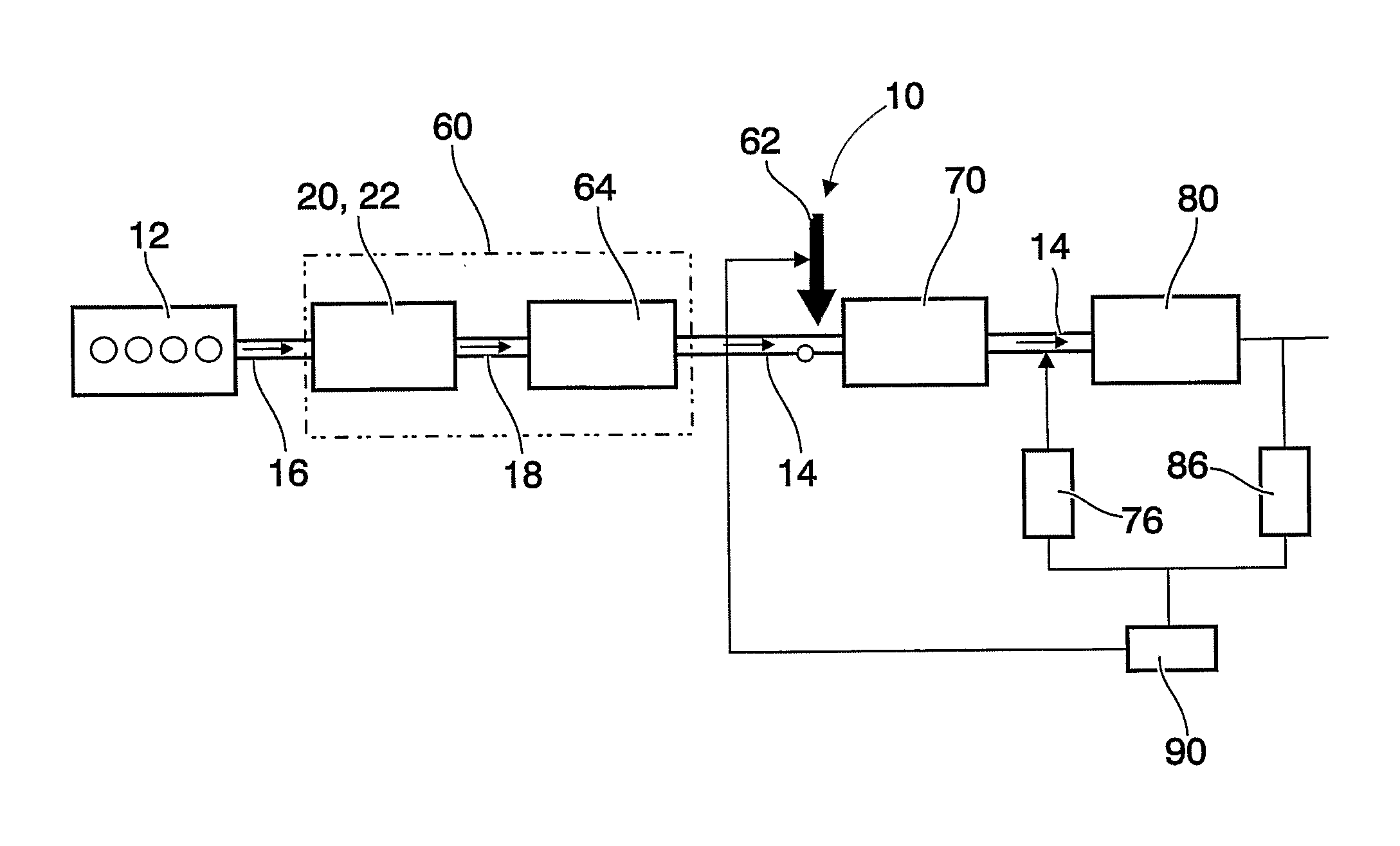SCR closed loop control system
a closed loop control and exhaust aftertreatment technology, applied in the direction of machines/engines, engine components, mechanical apparatus, etc., can solve the problems of increased nox levels, increased particulates, and inability to achieve high efficiency, so as to improve the accuracy of estimated stored nh3 and improve system performance. , the effect of reducing the amount of urea
- Summary
- Abstract
- Description
- Claims
- Application Information
AI Technical Summary
Benefits of technology
Problems solved by technology
Method used
Image
Examples
Embodiment Construction
[0022]According to a first aspect of the invention a preferred exhaust gas after treatment system 10 depicted in FIG. 1 comprises a diesel particulate filter unit (DPFU) 60 arranged downstream of a diesel engine 12 and a NOx reducing unit 70 such as preferably a selective-catalytic-reduction (SCR) arrangement arranged downstream of said DPFU 60, wherein an injector 62 is provided for feeding reducing agent such as ammonia or urea into the exhaust gas and arranged downstream of said DPFU 60 and upstream said SCR catalyst. Downstream said SCR 70 is provided a clean up catalyst 80. The DPFU 60 comprises an oxidation catalyst stage (DOCS) 20, e.g. an oxidation catalyst (DOC) 22 and a diesel particulate filter (DPF) 64, which is arranged downstream of the DOC 22. Optionally, the DPF 64 can exhibit an oxidizing catalytic coating which can replace the DOC 22 as oxidation stage 20 or which can at least support the DOC 22.
[0023]The clean-up catalyst 80 is used to clean-up excess of ammonia b...
PUM
 Login to View More
Login to View More Abstract
Description
Claims
Application Information
 Login to View More
Login to View More - R&D
- Intellectual Property
- Life Sciences
- Materials
- Tech Scout
- Unparalleled Data Quality
- Higher Quality Content
- 60% Fewer Hallucinations
Browse by: Latest US Patents, China's latest patents, Technical Efficacy Thesaurus, Application Domain, Technology Topic, Popular Technical Reports.
© 2025 PatSnap. All rights reserved.Legal|Privacy policy|Modern Slavery Act Transparency Statement|Sitemap|About US| Contact US: help@patsnap.com


